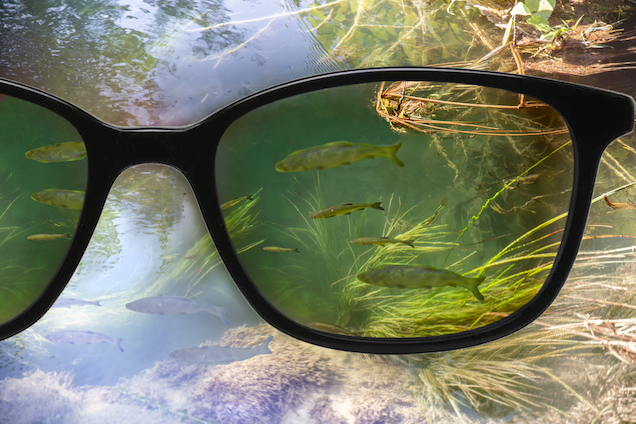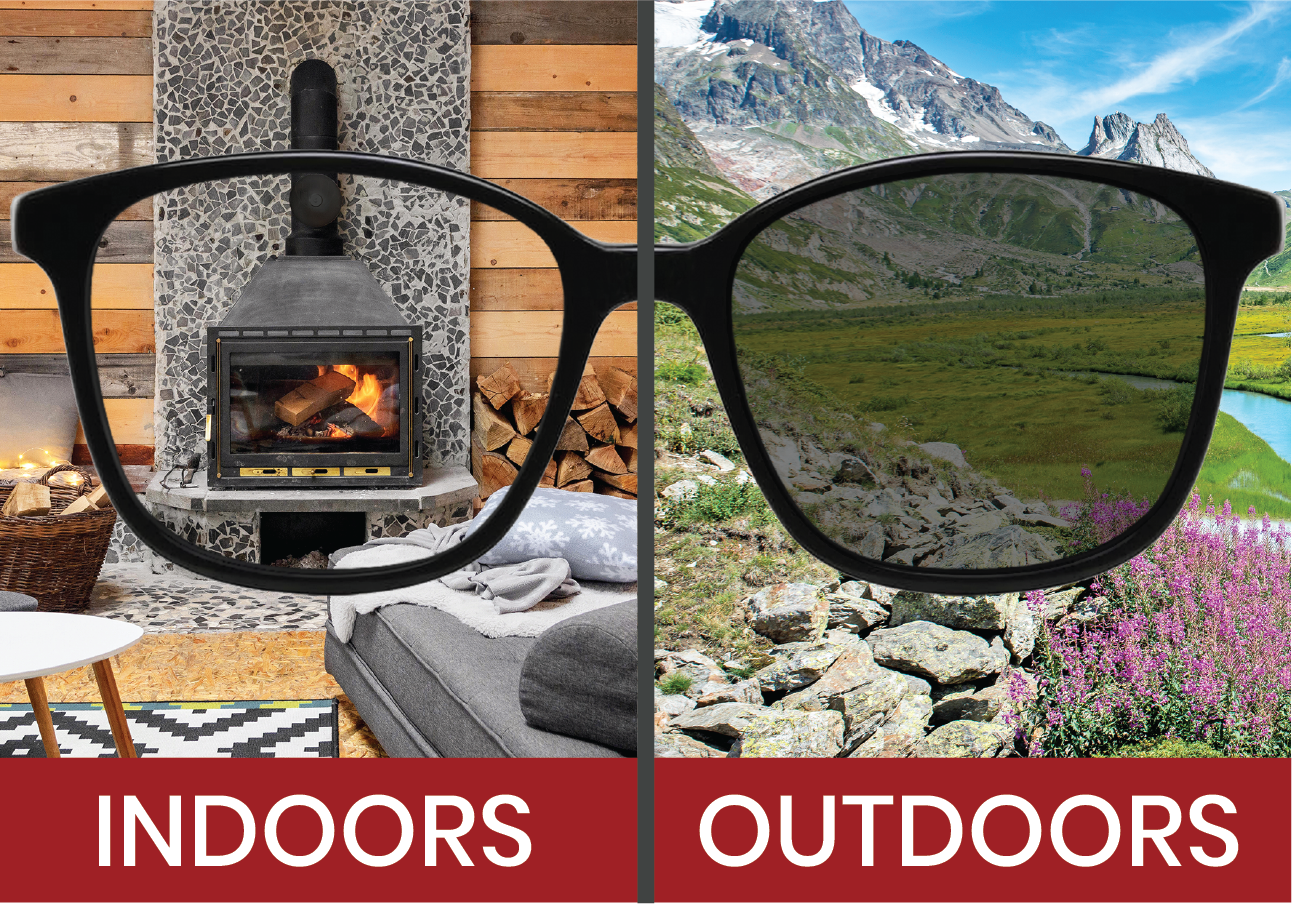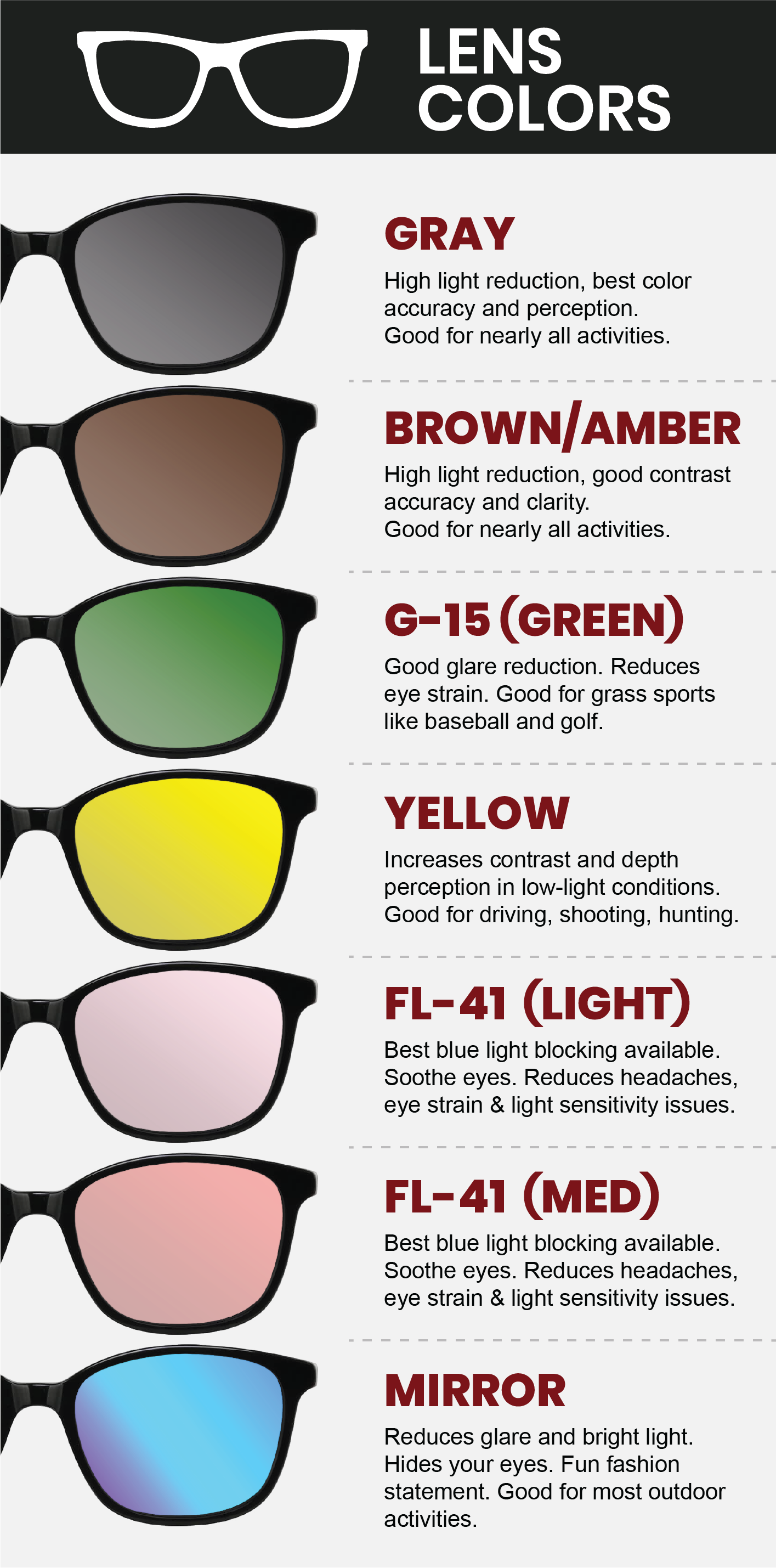DID YOU KNOW… 99% of our sunglass frames can be turned into prescription sunglasses
AND 99% of our regular frames can be made into sunglasses -with or without a prescription!
POLARIZED LENSES – PROS & CONS
 The PROS: A polarized lens is great for glare reduction, like you find on or near water, or shiny objects like car bumpers. This makes them great for water sports such as fishing, boating, daytime driving, and everyday activities in sunny environments.
The PROS: A polarized lens is great for glare reduction, like you find on or near water, or shiny objects like car bumpers. This makes them great for water sports such as fishing, boating, daytime driving, and everyday activities in sunny environments.
The CONS: A polarized lens can cause issues with depth perception, which is why they are not recommended for evening driving, or allowed for pilots when flying commercial airplanes, or for long-haul truckers. Since depth perception is an essential part of many sports, they are also not recommended for sports that rely on hand-eye coordination. Also, keep in mind that drivers, boaters and pilots may experience problems seeing certain digital displays on instrument panels while they’re wearing polarized sunglasses. This can be a problem if a split-second decision depends on the information displayed on a screen.
If you are sensitive to glare or if your activities don’t require you to worry about depth perception, and you like to fish or boat, then a polarized lens is a great choice for you. Check the label too -not all polarized lenses block UV rays.
LIGHT ADAPTIVE LENSES – PROS & CONS
 The PROS: Technically, Photochromic or “light adaptive” lenses
The PROS: Technically, Photochromic or “light adaptive” lenses
are a hybrid – when indoors they are clear and simply act as regular glasses would, but when outdoors, they darken as they are exposed to UV light, transforming into sunglasses. The brighter the sun, the darker the lenses get. When you are no longer exposed to the effects of UV (like indoors), the lenses return to their clear state. Photochromic lenses block 100% of harmful UVA and UVB rays.
The CONS: While photochromic lenses are a great everyday solution for outdoor use, there are times where a pair of prescription sunglasses is more beneficial. For instance, since photochromic lenses are activated by UV exposure, they don’t work very well behind the windshield of cars or trucks because modern windshields already block most of the UV rays that cause photochromic lenses to activate. As a result, photochromic lenses rarely activate inside a car. Also, because extremely high temperatures can affect lens performance, photochromic lenses may not always get as dark as sunglasses.
THE BENEFITS OF TINTS
 If you check out our sunglasses section, you will notice that most pairs are either gray or
If you check out our sunglasses section, you will notice that most pairs are either gray or
brown/amber. But just like frames, sunglass tints come in a variety of options. Some people pick their lenses simply because they like the color. Others go for a specific tint according to the activity they’re doing, which makes sense because they can help in different ways. All of our tints are available with or without a prescription.
Here’s a quick guide of the common tints that we offer.
Gray tint: Great choice for color accuracy and contrast -reduces amount of brightness with least amount of color distortion. Good for driving and all outdoor sports in bright, sunny conditions.
Brown/Amber tint: Good for brightness reduction. Slight color distortion, but great contrast and clarity. Can sharpen vision which can be helpful when playing sports or driving. Good for driving and all outdoor sports.
Green tint: Good glare reduction. Can be helpful when worn outdoors in verdant areas, such as while playing baseball, golfing or hunting. Sports glasses with
Yellow tint: Heightens contrast and depth-perception. Work especially well in low-light conditions like overcast days, and at dawn and dusk. Slight color distortion, but great choice for wearing while driving, cycling, motorbiking, shooting, or on snowy slopes. Some people prefer a yellow tint for night driving too.
FL-41 tints: Best available tint for eyestrain, headaches/migraines or light sensitivity. Highest blue-blocking properties. While mostly worn indoors, FL-41 tints can be worn as sunglasses when outside. Available in light or medium tints. Click here for more details.
Mirrored sunglasses: With or without colored shading, a mirrored coating helps limit the intensity of light in very bright conditions such as snow. Mirrored lenses are both functional and fashionable -with a little extra flash.
